Sancocho, a beloved Latin American stew, is more than just a dish—it’s a culinary journey. Each variation tells a story of cultural heritage, regional flavors, and unique cooking traditions. As a lifestyle blogger passionate about food and culture, I’m thrilled to guide you through the delightful world of Sancocho.
Whether it’s the hearty Sancocho de Siete Carnes or the comforting Sancocho de Gallina, each version offers a distinct taste of tradition. Let’s explore variations of Sancocho and uncover what makes each one special.
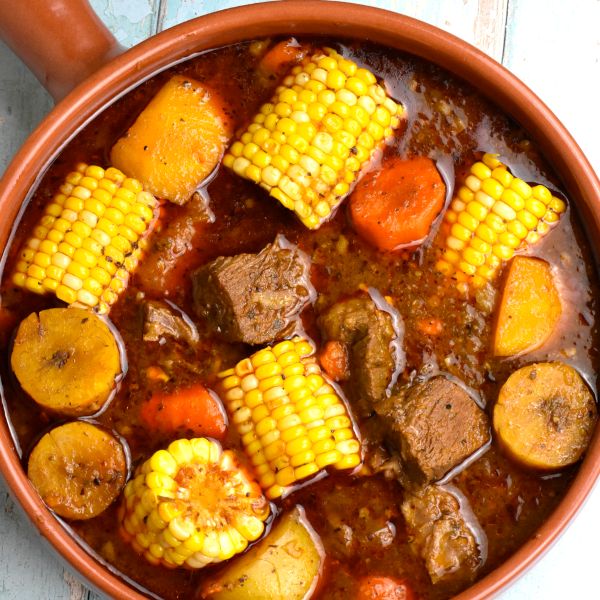
Sancocho de Siete Carnes
Sancocho de Siete Carnes, or Seven-Meat Stew, is a true feast for the senses. This robust version of Sancocho is celebrated for its rich flavors and diverse textures, thanks to its unique combination of meats.
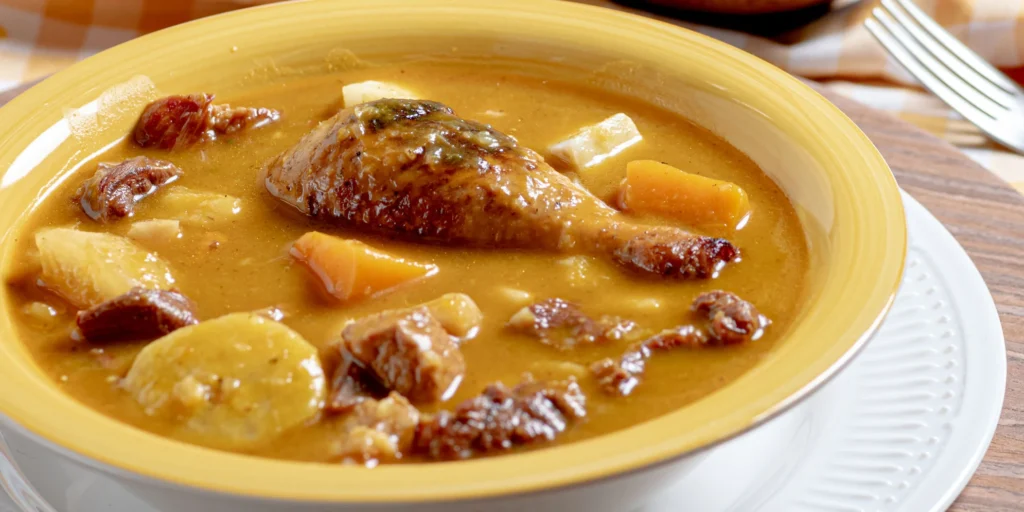
Unique Ingredients
The magic of Sancocho de Siete Carnes lies in its ingredients. It features a variety of meats, each contributing its own flavor to the stew. Typically, you’ll find:
- Beef: Adds a hearty, deep flavor.
- Pork: Contributes richness and a hint of sweetness.
- Chicken: Brings tenderness and lightness.
- Goat: Offers a gamey, earthy taste.
- Ham: Adds a smoky depth.
- Sausages: Infuse the stew with spices and robust flavors.
- Offal: Provides a unique, rich taste that enhances the overall complexity.
Alongside these meats, vegetables such as yucca, plantains, corn, and potatoes are essential. Aromatic herbs and spices like cilantro, oregano, and garlic give the stew its signature depth of flavor.
Preparation Steps
Preparing Sancocho de Siete Carnes is a labor of love. Here’s how to bring this hearty stew to life:
- Marinate the Meats: Start by marinating the meats with a mix of garlic, cilantro, oregano, salt, and pepper. Let them soak up the flavors for at least an hour.
- Brown the Meats: In a large pot, brown the meats in batches to develop a rich, caramelized flavor.
- Build the Base: Sauté onions, bell peppers, and tomatoes in the same pot until they’re soft and fragrant. This forms the base of the stew.
- Add Broth and Meats: Pour in beef or chicken broth, then add the browned meats. Let them simmer gently to tenderize.
- Incorporate Vegetables: Add yucca, plantains, corn, and potatoes. These should cook until tender, absorbing the savory broth.
- Season and Simmer: Adjust the seasoning with salt, pepper, and additional herbs. Let the stew simmer until all the flavors meld together beautifully.
- Serve and Enjoy: Serve the Sancocho hot, garnished with fresh cilantro and a side of white rice.
Sancocho de Gallina
Sancocho de Gallina, or Hen Stew, is a comforting and nourishing variation of Sancocho, often enjoyed during family gatherings and special occasions.
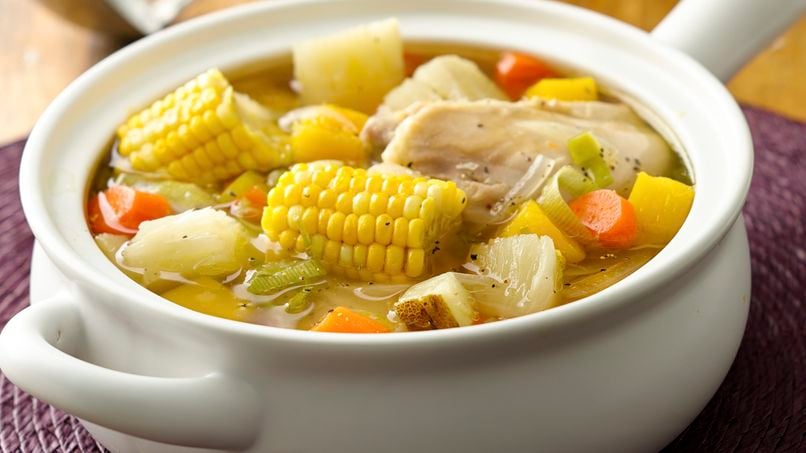
Unique Ingredients
The key ingredient in Sancocho de Gallina is, of course, the hen. Its meat is slightly tougher and more flavorful than regular chicken, making it perfect for slow cooking. Other essential ingredients include:
- Hen: Provides a distinct, rich flavor.
- Yucca: Adds a starchy, slightly sweet component.
- Plantains: Contribute a unique texture and taste.
- Corn: Offers sweetness and a slight crunch.
- Potatoes: Add heartiness to the stew.
- Aromatics: Onions, garlic, cilantro, and bell peppers enhance the flavor.
Preparation Steps
Creating Sancocho de Gallina involves a few simple steps:
- Prepare the Hen: Clean and cut the hen into pieces. Marinate with garlic, cilantro, oregano, salt, and pepper.
- Brown the Hen: In a large pot, brown the hen pieces to develop flavor.
- Create the Base: Sauté onions, bell peppers, and tomatoes in the same pot.
- Add Broth and Hen: Pour in chicken broth and add the hen pieces. Let it simmer slowly.
- Include Vegetables: Add yucca, plantains, corn, and potatoes. Allow them to cook until tender.
- Season and Simmer: Adjust the seasoning as needed. Let the stew simmer to blend all the flavors.
- Serve and Enjoy: Serve hot, garnished with fresh cilantro and accompanied by white rice or avocado slices.
Regional Variations in the Dominican Republic
The Dominican Republic boasts several regional variations of Sancocho, each reflecting local tastes and traditions. These variations showcase the diverse culinary landscape of the country.

Differences in Ingredients
Different regions in the Dominican Republic have their own take on Sancocho, often using locally available ingredients. For instance:
- Northern Region: Known for adding smoked meats and a variety of root vegetables.
- Southern Region: Often incorporates tropical tubers like malanga and yautía.
- Eastern Region: Features more seafood, given its coastal proximity.
- Central Region: Prefers a mix of meats and robust, hearty vegetables.
Cooking Methods
While the core preparation method remains similar, regional cooking techniques can vary:
- Northern Cooking: Often includes smoking some of the meats before adding them to the stew.
- Southern Cooking: May involve roasting vegetables before incorporating them, adding a depth of flavor.
- Eastern Cooking: Sometimes uses a clay pot, which imparts a unique taste to the stew.
- Central Cooking: Tends to use slow-cooking methods, allowing the flavors to develop fully over time.
Exploring these regional variations not only broadens your palate but also deepens your appreciation for the cultural richness embedded in each bowl of Sancocho.
Sancocho de Pescado
Another intriguing variation of Sancocho is Sancocho de Pescado, or Fish Stew. This version is especially popular in coastal regions and brings a lighter, yet equally flavorful, twist to the traditional meat-based Sancocho.
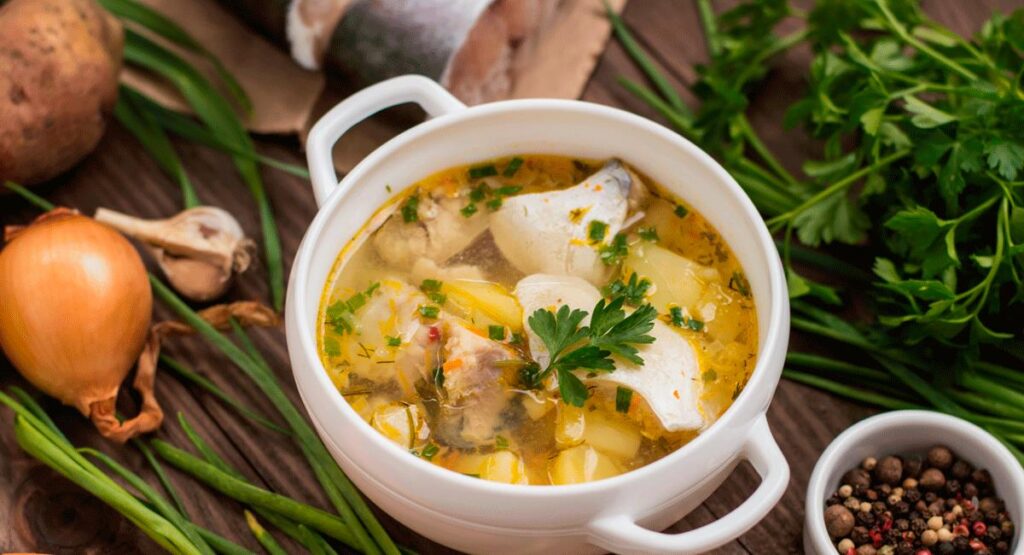
Unique Ingredients
The primary ingredient in Sancocho de Pescado is, naturally, fish. Typically, a firm white fish such as grouper or snapper is used. Other ingredients include:
- Fish: Provides a delicate, yet robust flavor.
- Yucca: Adds a starchy base.
- Green Plantains: Contribute a unique texture and slight sweetness.
- Corn: Offers a crunchy, sweet contrast.
- Cilantro and Oregano: Essential herbs for flavor.
- Lime Juice: Adds a refreshing tang.
Preparation Steps
The preparation of Sancocho de Pescado is similar to other variations, with a few key differences to highlight the fish:
- Prepare the Fish: Clean and cut the fish into chunks. Marinate with lime juice, garlic, cilantro, oregano, salt, and pepper.
- Sauté Aromatics: In a large pot, sauté onions, bell peppers, and tomatoes.
- Add Broth and Fish: Pour in a light fish broth and add the marinated fish. Allow it to simmer gently.
- Include Vegetables: Add yucca, plantains, and corn. Let them cook until tender.
- Season and Simmer: Adjust the seasoning with salt and pepper. Simmer until all the flavors meld together.
- Serve and Enjoy: Serve the stew hot, garnished with fresh cilantro and lime wedges.
Sancocho de Mondongo
Sancocho de Mondongo, or Tripe Stew, is another variation that stands out for its unique use of tripe. This version is rich and hearty, perfect for those who enjoy exploring different textures and flavors.
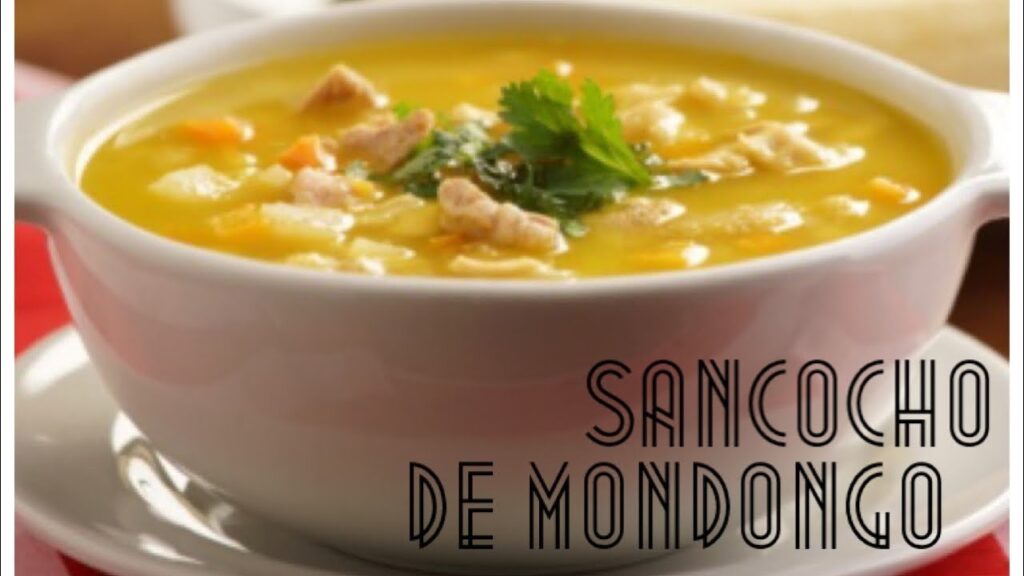
Unique Ingredients
The star ingredient in Sancocho de Mondongo is tripe, which provides a chewy, flavorful base. Other ingredients include:
- Tripe: Adds a distinct, rich flavor.
- Root Vegetables: Yucca, potatoes, and plantains.
- Aromatics: Garlic, onions, cilantro, and bell peppers.
- Corn and Carrots: Add sweetness and color.
- Tomato Paste: Enhances the depth of the broth.
Preparation Steps
Making Sancocho de Mondongo involves careful preparation of the tripe:
- Clean the Tripe: Thoroughly clean the tripe and cut it into bite-sized pieces. Parboil to remove any excess fat and impurities.
- Sauté Aromatics: In a large pot, sauté onions, bell peppers, garlic, and tomato paste.
- Add Broth and Tripe: Pour in beef broth and add the tripe. Simmer gently to tenderize.
- Include Vegetables: Add yucca, plantains, potatoes, corn, and carrots. Cook until tender.
- Season and Simmer: Adjust seasoning with salt, pepper, and herbs. Simmer until flavors meld.
- Serve and Enjoy: Serve hot, garnished with fresh cilantro and a side of rice or avocado.
Sancocho de Costilla
Sancocho de Costilla, or Rib Stew, is a favorite for meat lovers. This version uses beef or pork ribs, providing a rich, hearty flavor and a satisfying meal.
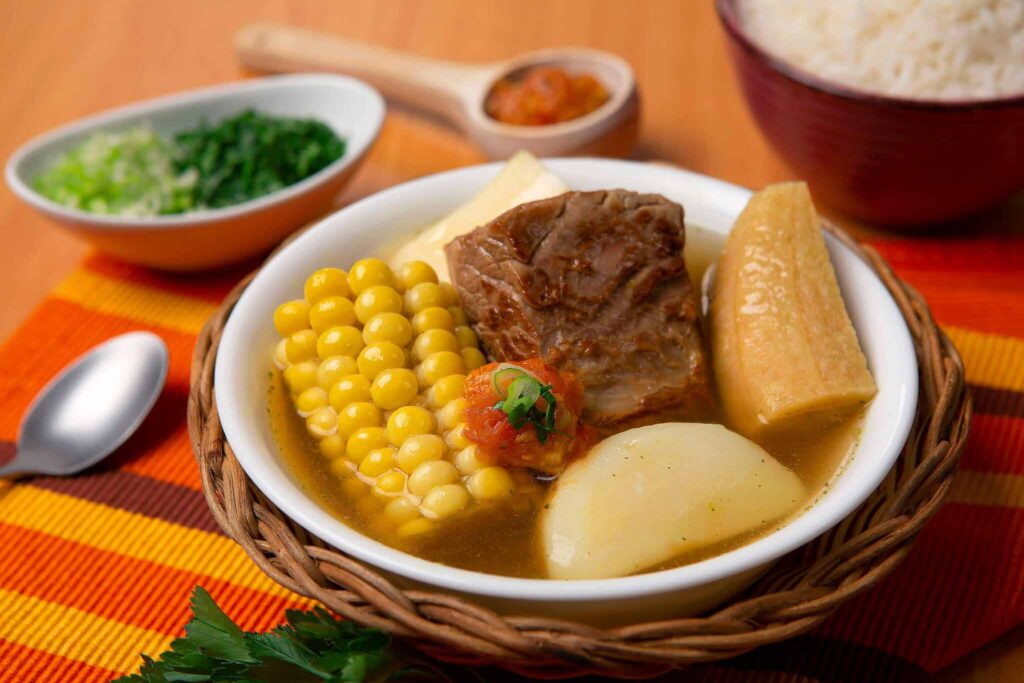
Unique Ingredients
The ribs are the highlight of this Sancocho, offering a deep, savory taste. Other ingredients include:
- Ribs: Beef or pork ribs for a robust flavor.
- Root Vegetables: Yucca, potatoes, and plantains.
- Aromatics: Garlic, onions, cilantro, and bell peppers.
- Corn and Sweet Potatoes: Add sweetness and depth.
- Herbs and Spices: Oregano, cilantro, and cumin.
Preparation Steps
Cooking Sancocho de Costilla involves slow cooking to ensure tender, flavorful ribs:
- Prepare the Ribs: Cut the ribs into manageable pieces and marinate with garlic, cilantro, oregano, salt, and pepper.
- Brown the Ribs: In a large pot, brown the ribs to develop flavor.
- Sauté Aromatics: In the same pot, sauté onions, bell peppers, and garlic.
- Add Broth and Ribs: Pour in beef or chicken broth and add the ribs. Simmer slowly to tenderize.
- Include Vegetables: Add yucca, plantains, potatoes, corn, and sweet potatoes. Cook until tender.
- Season and Simmer: Adjust seasoning with salt, pepper, and herbs. Simmer until flavors meld.
- Serve and Enjoy: Serve hot, garnished with fresh cilantro and a side of rice.
The Cultural Significance of Sancocho
Sancocho is more than just a meal; it’s a cultural emblem that represents community, tradition, and the joy of shared experiences. In many Latin American countries, Sancocho is a dish that brings people together, whether for family gatherings, celebrations, or simply a comforting meal.
Family Traditions
In many households, Sancocho is a cherished family recipe passed down through generations. Each family may have its own special touch or secret ingredient that makes their Sancocho unique. Preparing and enjoying Sancocho together is a way to honor these traditions and create lasting memories.
Festive Occasions
Sancocho is often the star of the show during festive occasions and celebrations. Whether it’s a holiday, a birthday, or a special event, Sancocho brings a sense of festivity and warmth. The process of making Sancocho can be a communal activity, with family members and friends coming together to prepare the ingredients and cook the stew.
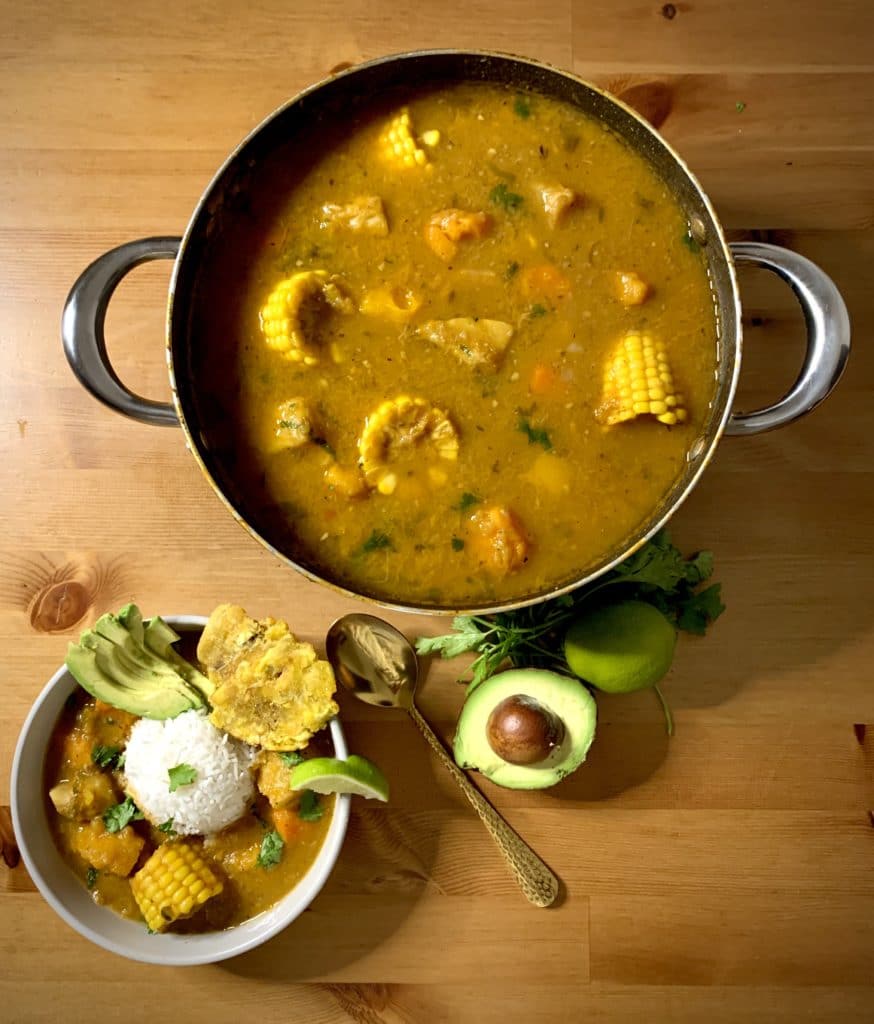
Community and Sharing
Sancocho embodies the spirit of community and sharing. It’s a dish that encourages people to gather around the table, share stories, and enjoy each other’s company. In many communities, Sancocho is prepared in large quantities to be shared with neighbors and friends, fostering a sense of unity and togetherness.
Conclusion
Sancocho is more than just a stew; it’s a celebration of heritage, flavors, and the joy of communal eating. Whether you’re savoring the seven-meat extravaganza of Sancocho de Siete Carnes or the comforting warmth of Sancocho de Gallina, each variation offers a unique taste experience. And with the diverse regional versions across the Dominican Republic, there’s always something new to discover and enjoy.
So, grab your spoon and dive into the rich, flavorful world of Sancocho—it’s a journey you won’t forget.
FAQs
Disclosure: Our blog contains affiliate links to products. We may receive a commission for purchases made through these links. However, this does not impact our reviews and comparisons. We try our best to keep things fair and balanced, in order to help you make the best choice for you.
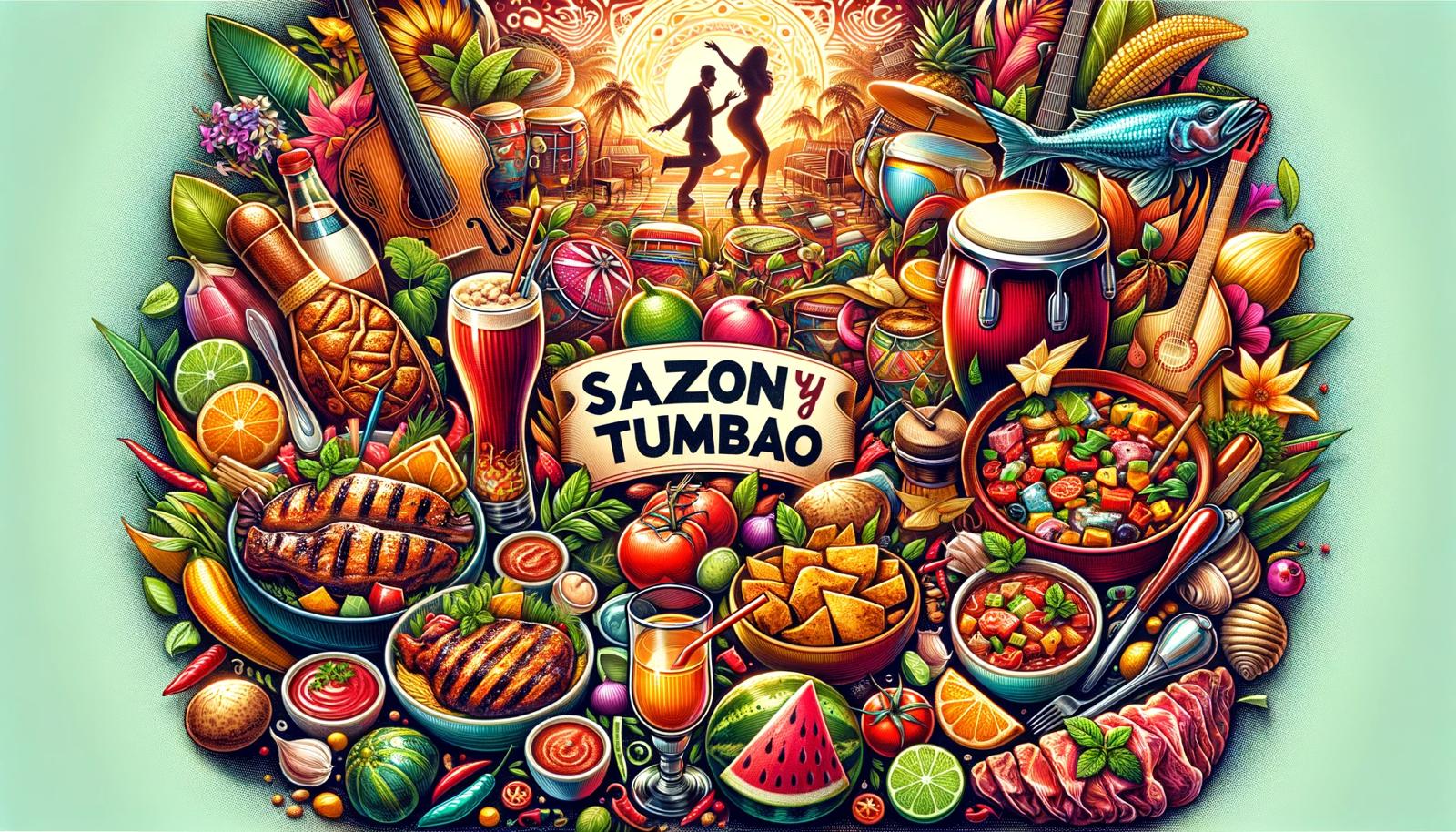
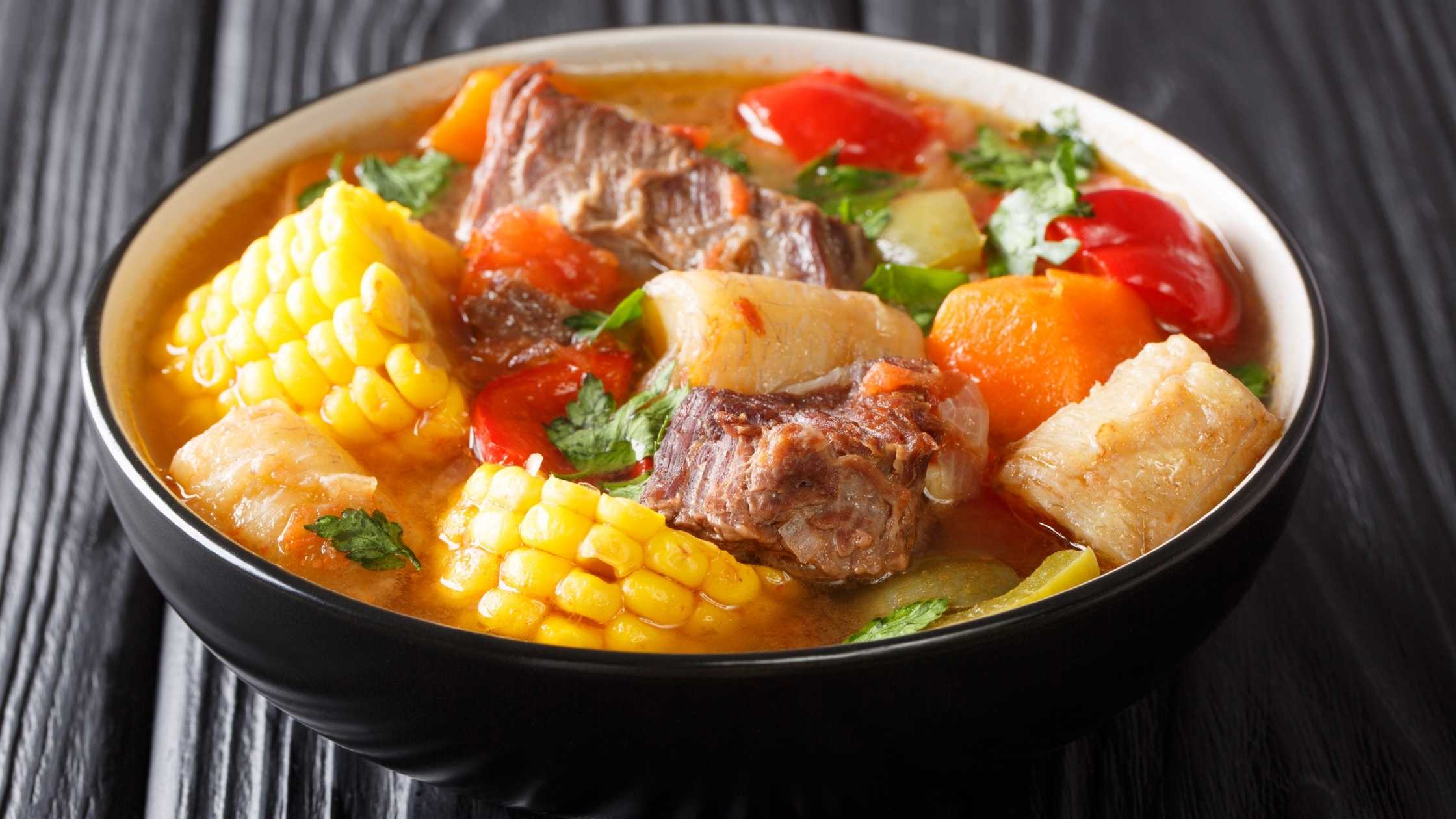
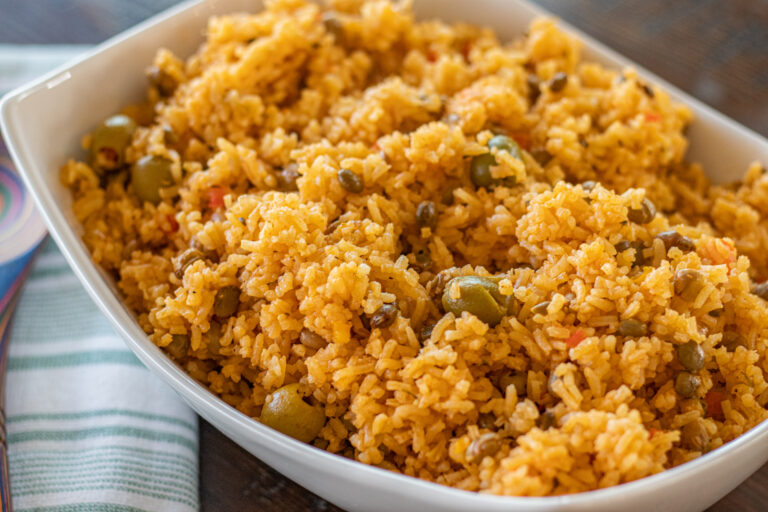

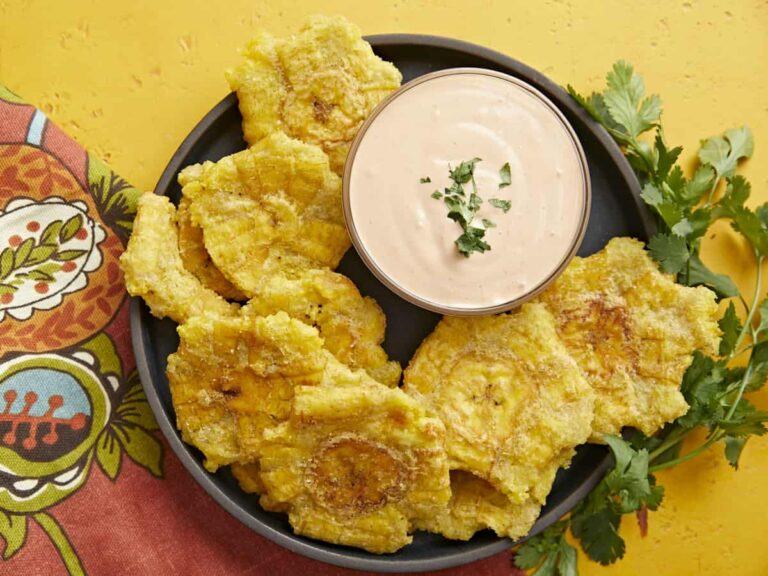



2 Comments